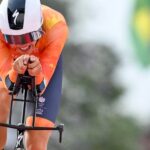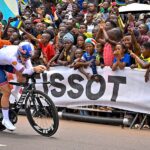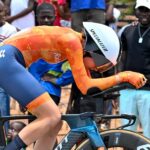
Norway’s harsh weather, with long winters, heavy snowfall and changing conditions, creates an environment where only the toughest cyclists can succeed. The country’s varied landscape, from frozen fjords to steep mountain roads, tests both physical strength and mental toughness. Riding outdoors in subzero temperatures and limited daylight for much of the year forces Norwegian cyclists to build strong discipline and determination. These extreme conditions contribute to the emergence of elite cyclists who are well prepared for international competition.
The constant battle against nature sharpens their ability to stay focused under pressure. Over time, this resilience becomes a defining advantage in races that demand both stamina and mental control. Due to prolonged winters, many Norwegians turn to digital pastimes to balance indoor time, including safely regulated gaming environments. With so many online casinos available, it can be difficult to choose the right one. This is where nettcasino.com proves useful, reviewing the top casinos in Norway and Scandinavia to help users find the best and most secure options. Such platforms offer engaging entertainment during long winter evenings, reflecting a broader trend toward blended offline and online leisure in Norway. As with competitive sports, online casino games and sports betting also offer a mix of strategy, risk and emotional highs and lows. Many Norwegians engage with these platforms to enjoy the thrill of prediction, much like anticipating the outcome of a challenging race stage. This mental stimulation complements the intense training lifestyles athletes maintain during the colder months.
Edvald Boasson Hagen, born in 1987, is widely regarded as one of Norway’s most versatile cyclists. Known for his strong rouleur abilities combined with a powerful sprint, he has claimed multiple stage victories in major races such as the Tour de France and Giro d’Italia. His achievements in Norwegian time trial championships highlight his technical skill and aerodynamic focus, both crucial for performance on flat and rolling terrain. Thor Hushovd, another legendary figure, won ten Tour de France stages and captured the UCI World Championship title. Renowned for training through all seasons, including brutal Norwegian winters, Hushovd helped pioneer winter endurance strategies now embedded in Scandinavian cycling culture.
Unni Larsen stands out as a trailblazer in Norwegian women’s cycling, earning 15 national titles and representing Norway in the 1984 and 1988 Olympic Games. Her emphasis on consistent high-volume training and technical refinement established a strong model for future generations of female endurance athletes. These standout individuals exemplify how Norway’s demanding climate, challenging geography and scientific training philosophy together produce cyclists capable of competing at the highest levels globally.
Winter Training Strategies
Norway’s landscape is defined by towering mountains, deep fjords and long valleys. With over 13,000 peaks above 100 meters, every ride becomes a technical challenge involving steep climbs, fast descents and fjord-side detours that test both physical stamina and bike handling. Add to this over 1,200 tunnels along major routes and Norwegian cyclists must frequently adjust between ambient daylight, artificial lighting and traffic conditions.
Winter brings prolonged darkness and snow cover from December through March. Around Oslo, daylight in midwinter may last only from 10 a.m. to 3 p.m. However, coastal corridors like Stavanger remain rideable year-round due to the warming effects of the Gulf Stream, allowing elite riders to maintain consistent training cycles. In northern regions, athletes often switch to fat bikes or use smart trainers like the Tacx Neo 2T to simulate mountain efforts indoors, maintaining key adaptations during the frozen months.
Research from the Norwegian School of Sport Sciences shows that training in subzero conditions improves thermoregulation and cardiovascular efficiency. The varied altitudes in areas such as Telemark and Nordland allow riders to engage both aerobic and anaerobic systems in a single session. This adaptability to changes in gradient, weather and tempo builds resilience suited to stage racing and one-day classics.
To manage icy terrain, Norwegian cyclists often ride on studded mountain bike tires or gravel setups. Training continues on forest trails and gravel roads even when snow-covered into early summer requiring excellent balance and bike control. Cross-country skiing is a cornerstone of winter training, enhancing leg and core strength while lowering the risk of overuse injuries. These snow-covered trails also serve as endurance platforms when cycling outdoors becomes unsafe or impractical.
Elite athletes like Tobias Foss, the 2022 Time Trial World Champion, frequently alternate between skiing and cycling to maintain cardiovascular output while minimizing impact stress. Heart rate variability data from national team athletes shows consistent aerobic benefits when training loads are carefully managed across both modalities. Coaches also use resistance work and VO2 max intervals on smart platforms like Zwift and Rouvy to simulate mountain stages indoors. In Arctic cities like Tromsø, athletes ride under headlamps with power meters, adjusting cadence and torque to maintain pedal efficiency in freezing conditions. This multi-sport, data-informed approach produces cyclists who are physically hardened, tactically flexible and technically refined.
Science‑Driven Endurance
Norway’s success comes from a well-planned training method that focuses on the body’s limits and careful tracking. Most training sessions, around 90 percent, are done at an easy pace below the first lactate limit. Only about 10 to 20 percent of the workouts are done at a harder or faster pace. Elite cyclists often implement double threshold days, performing two precisely calibrated lactate-controlled workouts within 24 hours to maximize stimulus while minimizing fatigue.
Lactate monitoring, done with handheld analyzers such as the Lactate Scout, helps ensure that even submaximal sessions are kept within physiologically productive zones. This precision is evident in the performance data of national team riders, where average weekly volumes regularly exceed 20 hours and power outputs during high intensity intervals range from 5.7 to 6.1 watts per kilogram for 5-minute efforts and 4.9 to 6.1 watts per kilogram for longer efforts exceeding 20 minutes. Athletes like Tobias Foss and Katrine Aalerud have used this model to compete successfully in WorldTour events, with consistent performances in multi-day stage races.
Heat acclimation is also strategically applied; for instance, when weather permits, Norwegian cyclists undergo five-week heat block protocols during autumn using indoor setups in high humidity, which have shown to increase lactate threshold by 8 percent and VO2 max by 7 percent. Technical data collected through blood markers and HRV trends shows these adaptations are sustained for up to six weeks post-acclimation, helping Norwegian cyclists perform well even in hot-weather races like the Vuelta a España or the UAE Tour.
Altitude training camps in Sierra Nevada or Livigno are also routinely used to further stimulate red blood cell production and enhance oxygen delivery. This multi-pronged scientific approach makes Norwegian endurance athletes among the most systematically prepared in global cycling.
Effects of Cold on Performance and Body
A pilot study of pro cyclists racing in cold conditions around 7.8 degrees Celsius, wind adjusted, revealed that temperature and gradient significantly altered cadence, power output, speed, core temperature and heart rate. These findings support strict acclimation protocols followed by Norwegian riders, which include extended warm ups, dynamic layering and strategic hydration with insulated bottles to prevent freezing.
Core temperature tends to drop during prolonged exposure, especially on descents, reducing muscle contractility and delaying neuromuscular response. This can impair both sprint capacity and climbing efficiency. To counteract these effects, Norwegian cyclists wear thermal bibs and neoprene overshoes, while relying on power meters to maintain target wattage despite diminished sensory feedback. Real-world data collected during UCI races like the Arctic Race of Norway show that riders experience a 10 to 12 percent drop in average power on cold days compared to milder weather unless they are specifically acclimatized.
Continuous monitoring of skin temperature and heart rate variability through wearables such as CoreBody or Whoop helps athletes gauge readiness and avoid underperformance. These adaptations also reduce the risk of peripheral vasoconstriction, which can negatively affect grip, braking and energy availability in critical race moments.
Elite Norwegian cyclists face additional risks related to bone density due to the non-weight bearing nature of cycling. A study using DXA scans found that 10 of 19 national-level cyclists had low bone mineral density in the lumbar spine and femoral neck, despite regular resistance training. This issue arises because cycling lacks the impact loading necessary to stimulate osteoblast activity, which is crucial for maintaining bone density.
To address this, coaches integrate heavy compound lifts such as squats and deadlifts twice a week during base training periods, alongside plyometric exercises to provide vertical loading. Cross-training activities like running and hiking are encouraged during the off-season to further stimulate skeletal loading. Nutritional strategies emphasize adequate calcium intake, vitamin D supplementation and careful monitoring of energy availability to avoid relative energy deficiency in sport, a condition linked to poor bone health. Periodic bone scans have become standard protocol for national team athletes, allowing individualized adjustments in training and nutrition.
Norwegian sports medicine experts also highlight the importance of tracking hormonal markers like testosterone and cortisol to detect early signs of imbalances in bone metabolism. These proactive measures help reduce fracture risk and ensure long-term musculoskeletal health without compromising endurance performance.
Final Thoughts
Econometric modelling conducted in Bodø, north of the Arctic Circle, predicts that by 2050 rising temperatures and increased precipitation could significantly shorten winter, boosting cycling frequency by about 6.2 percent. This shift is expected to extend the riding season, potentially doubling or tripling summer cycling due to milder and longer warm periods. From a technical standpoint, this could allow athletes to increase annual training volumes, which strongly correlate with improved endurance and power, as supported by the Norwegian School of Sport Sciences. However, more frequent wet road conditions may require advances in tire technology and bike handling to maintain safety.
Warmer winters might reduce the need for specialized cold weather gear, potentially shifting athlete preparation. These environmental changes may also affect race calendars, favouring longer outdoor events in northern regions. Overall, evolving climate presents new challenges and opportunities for Norwegian cyclists and coaches aiming for elite performance.
Norway’s blend of tough terrain, long winters and scientific training produces cyclists with rare resilience and skill. From studded tyre rides in sub-zero snow to structured lactate-based training, athletes develop power, adaptability, durability and mental grit. While bone health requires vigilance, champions like Boasson Hagen and Hushovd show the success of Norway’s model.
In a world of variable conditions, Norway’s approach teaches how to turn natural adversity into peak performance whether climbing steep mountains or refining a digital strategy like online gaming. The integration of technology and data-driven methods, combined with respect for nature, helps athletes leverage challenges. This genuine approach reflects physical and mental endurance trends seen across high-performance fields, providing a blueprint for athletes and professionals.
The post How Norway’s Harsh Climate Builds Tough Cyclists appeared first on PezCycling News.





